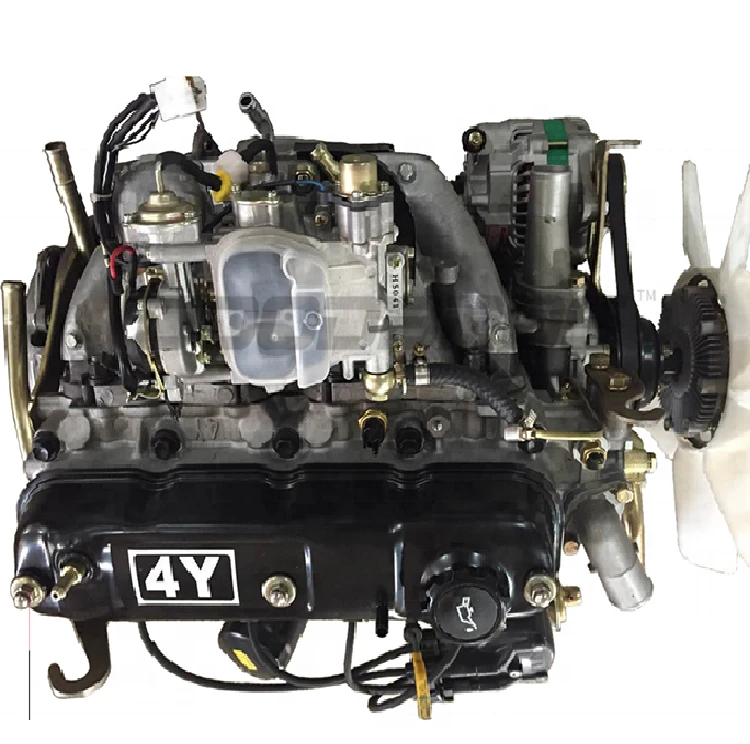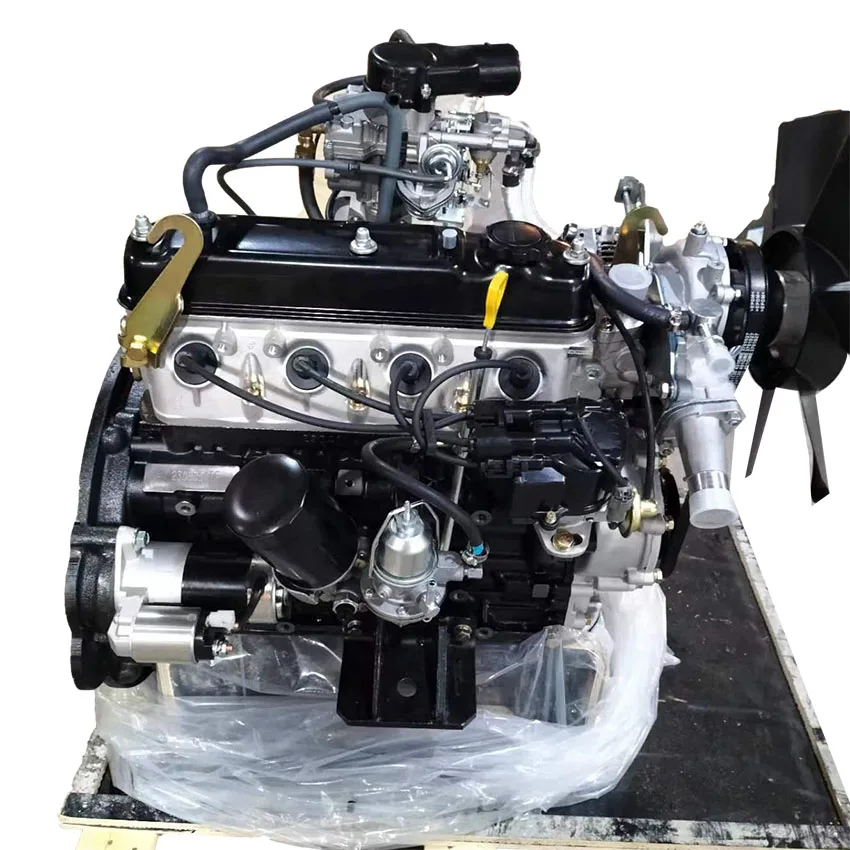How the 4Y Engine Contributes to a Smooth and Powerful Driving Experience
How the 4Y Engine Contributes to a Smooth and Powerful Driving Experience
Blog Article
The Ultimate Guide to the Engine: Secret Insights for each Automobile Fanatic
Recognizing the engine is fundamental for any type of vehicle fanatic, as it acts as the heart of the lorry and determines its efficiency. This guide offers a detailed assessment of engine makeup, kinds, and the mechanics behind their operation, including the innovative modern technologies that are improving the automobile landscape. It underscores the vital nature of maintenance techniques that can considerably impact an engine's life-span. However, the intricacies of engine dynamics and the most current advancements in technology existing inquiries that merit additional expedition. What might these understandings expose concerning the future of auto engineering?
Makeup of an Engine
Recognizing the makeup of an engine is vital for any type of vehicle lover seeking to dive much deeper into auto mechanics. An internal burning engine largely includes numerous vital parts that operate in unison to transform gas right into mechanical energy.
At the heart of this system exists the cylinder block, which houses the cyndrical tubes where combustion takes place. Piston activity within these cyndrical tubes is assisted in by the crankshaft, which converts linear movement into rotational power. Furthermore, the camshaft plays an essential function in controlling the opening and closing of the engine's shutoffs, making sure proper air-fuel combination intake and exhaust gas expulsion.
Other important components consist of the fuel system, which provides the engine with the essential fuel, and the ignition system, liable for initiating burning - 4y engine. The cooling and lubrication systems are also essential, preserving optimal operating temperature levels and decreasing rubbing, specifically
Engine Types and Configurations
A varied series of engine types and configurations exists, each offering one-of-a-kind advantages and negative aspects tailored to various driving requirements and choices. The most usual engine types consist of inline, V, level, and rotary arrangements.
Inline engines, featuring cylinders prepared in a solitary line, are recognized for their simpleness and effectiveness. They are frequently found in compact automobiles, offering a balance of power and economic situation. V engines, defined by their 2 banks of cylinders arranged in a V shape, give higher performance and smoother procedure, making them popular in sporting activities and luxury autos.
Level engines, or boxer engines, have horizontally opposed cyndrical tubes, which add to a lower center of mass, improving car security. These are generally seen in brands like Subaru and Porsche.
Rotary engines, although much less usual, utilize a special design with a triangular blades and deal high power-to-weight proportions. They excel in portable and light-weight applications, largely seen in Mazda cars.
Each engine type serves certain efficiency qualities, weight distributions, and gas efficiencies, making sure that car enthusiasts can select the ideal engine arrangement to match their driving design and vehicle requirements.

How Engines Work
Engines, regardless of their type or setup, operate on fundamental principles that regulate their efficiency and performance. At their core, engines convert gas right into mechanical power via a collection of controlled surges or compressions. This process typically includes 4 primary strokes: consumption, exhaust, compression, and power.
During the intake stroke, the engine attracts in a mixture of air and gas. In the power stroke, a spark ignites the pressed mixture (in gasoline engines) or the mix sparks spontaneously (in diesel engines), resulting in a quick development of gases that pushes the piston down.
The performance of an engine is influenced by various variables, consisting of the design of the combustion chamber, the sort of gas utilized, and the accuracy of the engine's elements. Recognizing these essential principles is crucial for cars and truck enthusiasts that seek to appreciate the complex auto mechanics special info behind their automobiles, along with for those aiming to improve performance via modifications and adjusting.
Innovations in Engine Modern Technology
Recently, advancements in engine technology have actually dramatically changed the automotive landscape, improving both efficiency and ecological sustainability. Among the most significant technologies is the development of turbocharging and supercharging, which enables smaller sized engines to produce greater power outcomes without giving up fuel efficiency. This has led to an increase in the appeal of scaled down engines, offering makers with the capacity to meet stringent discharges laws while maintaining performance standards.
Furthermore, hybrid and electric powertrains are reshaping the engine standard. Hybrid systems combine inner burning engines with electric motors, enhancing gas usage and minimizing discharges. Totally electrical automobiles (EVs) remove the burning engine altogether, depending on advanced battery innovation to supply instant torque and impressive acceleration.
In addition, the assimilation of expert system and device knowing in engine monitoring systems enables real-time optimization of efficiency parameters, enhancing performance and responsiveness. Technologies such as variable shutoff timing and straight fuel shot better refine combustion procedures, taking full advantage of power outcome while reducing waste.
As the automotive sector continues to evolve, these advancements in engine innovation will certainly play a crucial duty in forming the future of movement, focusing on both efficiency and sustainability.
Maintenance Tips for Fanatics
Preserving an engine is as vital as the innovations that improve its efficiency. Regular maintenance not only prolongs the life of your engine but additionally makes sure optimum efficiency. Begin with regular oil adjustments, complying with the maker's referrals for oil kind and adjustment intervals. Tidy oil lubricates engine elements efficiently, protecting against damage.
Change and check air filters periodically to ensure correct airflow, which is important for burning efficiency. A blocked air filter can cause lowered efficiency and raised gas intake. Similarly, monitor the coolant levels to stop overheating, and replace coolant according to the service schedule.

Conclusion
In my link final thought, a comprehensive understanding of engine anatomy, types, and technicians is vital for auto fanatics. Regular maintenance practices, including oil changes and air filter checks, are crucial for making sure ideal engine functionality and longevity.

Engines, no matter of their kind or arrangement, run on fundamental principles that regulate their performance and effectiveness. In the power stroke, a spark stirs up the compressed blend (in fuel engines) or the mix stirs up spontaneously (in diesel engines), resulting in a rapid expansion of gases that pushes the piston down.In recent years, developments in engine innovation have actually significantly changed the auto landscape, boosting both efficiency and ecological sustainability.
Report this page